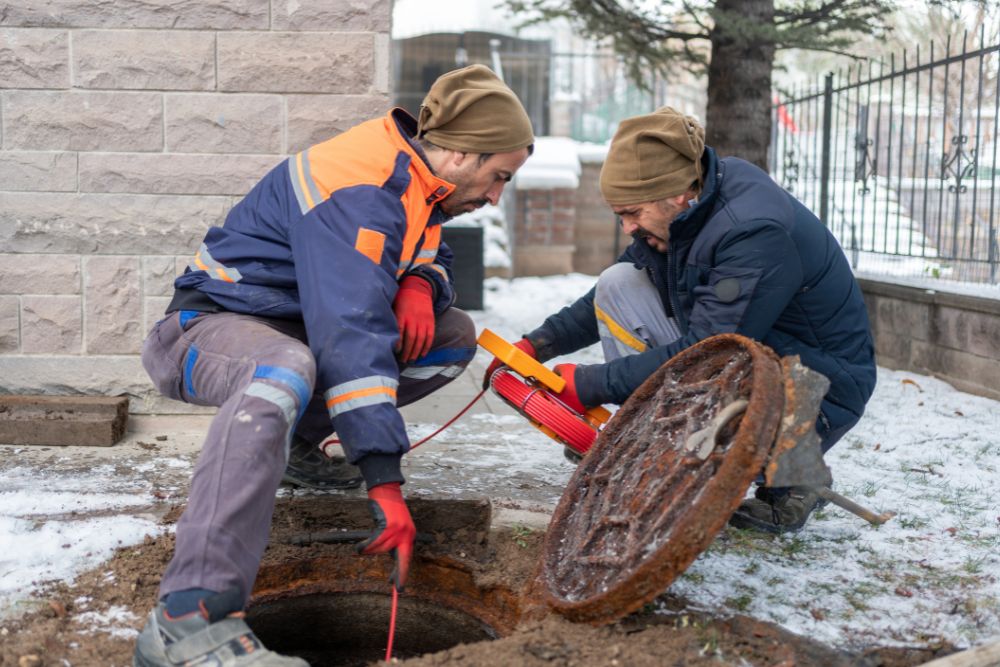Our homes rely on a complex network of hidden heroes, and the sewer line ranks high. This vital pipeline silently carries wastewater away, ensuring our homes remain sanitary and comfortable. But what happens when this buried lifeline succumbs to age, damage, or deterioration? The sewer line replacement becomes necessary, and navigating this process can feel daunting. This guide will equip you with the knowledge to understand sewer line replacement and highlight situations where the expertise of a professional well contractor becomes crucial.
Signs of a Failing Sewer Line
Several indicators can signal the need for sewer line replacement:
- Frequent Clogs and Backups: Sewer line clogs are a common occurrence, but persistent backups, especially in multiple drains, suggest a deeper problem within the line itself.
- Sewage Odors: A persistent sewage smell emanating from drains or around the house can indicate leaks or blockages within the sewer line.
- Slow Drainage: Drains that take an unusually long to empty could signify a partially blocked or collapsed sewer line.
- Soggy Lawns or Patches of Lush Growth: Sewage leaks from a damaged line can saturate the ground above, leading to soggy patches or areas of unexpectedly lush growth.
- Settling Foundation: A damaged or collapsed sewer line can undermine your home’s foundation, causing cracks or uneven floors.
If you experience any of these signs, contacting a qualified plumber for a professional inspection is crucial. They can utilize video camera technology to examine the sewer line’s condition and determine if replacement is necessary.
Sewer Line Replacement, Traditional vs Trenchless Methods
Once the replacement is confirmed, you’ll decide on traditional excavation or trenchless methods.
- Traditional Excavation: This involves digging a trench along the entire length of the sewer line. While a proven method, it can disrupt your landscaping, driveway, and overall property.
- Trenchless Sewer Line Replacement: This innovative approach utilizes various technologies to replace the sewer line without extensive digging. Some common trenchless methods include pipe bursting, horizontal directional drilling (HDD), and cured-in-place pipe (CIPP) lining. These methods offer significant advantages, including less disruption to your property, faster installation times, and lower overall costs.
The best method for your situation depends on various factors, such as the length and depth of the sewer line, soil conditions, and budget. A qualified plumber can assess your needs and recommend the most appropriate approach.
When a Professional Well Contractor Steps In: Beyond the Sewer Line
While sewer line replacement is a crucial plumbing task, there are situations where the expertise of a Professional Well Contractor becomes vital. Here’s when their knowledge comes into play:
- Sewer Line Damage Caused by Well Issues: A failing well pump or pressure tank issue can sometimes put undue stress on the sewer line, leading to cracks or breaks. A sound contractor can diagnose the problem and ensure the sewer line replacement project and any necessary well repairs are completed.
- Sewer Line Crossing Well Lines: Sometimes, sewer lines might run near or even cross well lines. Replacing a sewer line in such scenarios requires a good contractor’s expertise to ensure both systems’ integrity and avoid potential contamination risks.
Conclusion
Sewer line replacement can be a significant undertaking. However, with the correct information and the involvement of qualified professionals, you can navigate this process effectively. Understanding the signs of a failing sewer line, the advantages of trenchless methods, and the crucial role of good contractors in specific situations empowers you to make informed decisions and ensure a successful project that restores your home’s vital underground lifeline.







